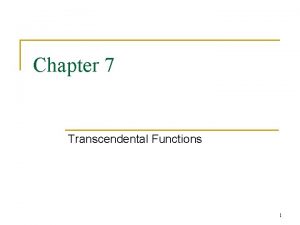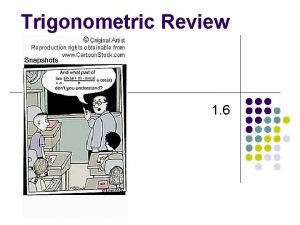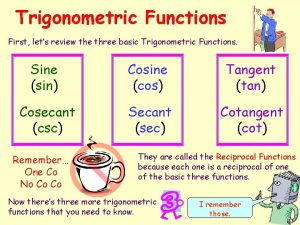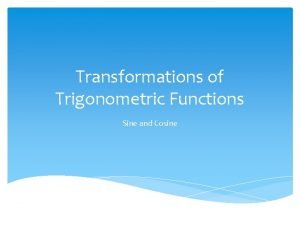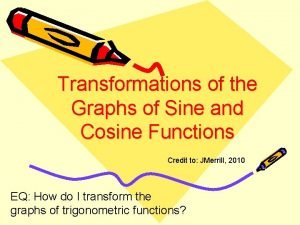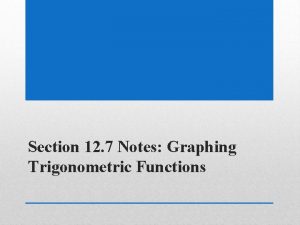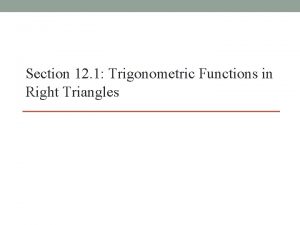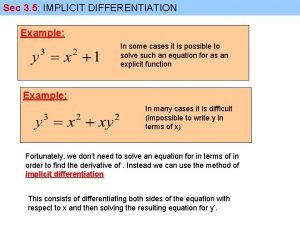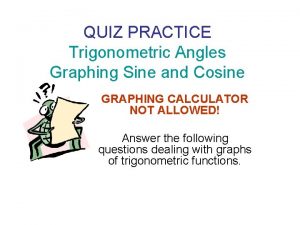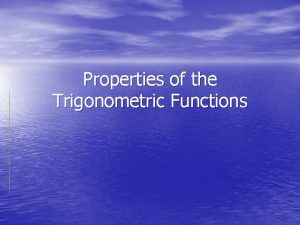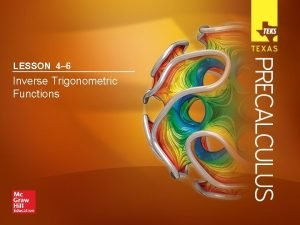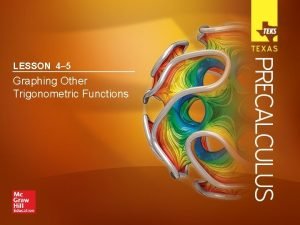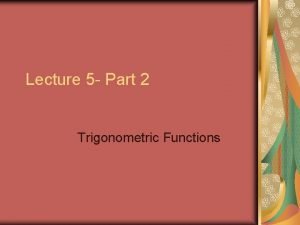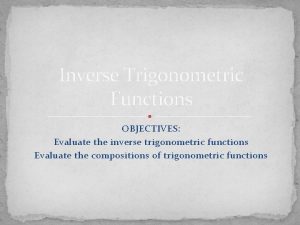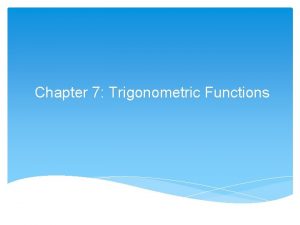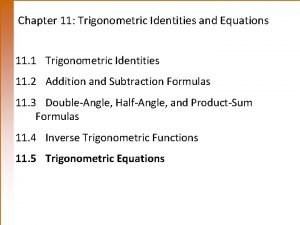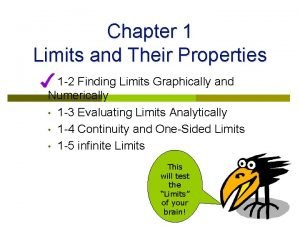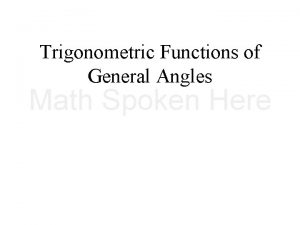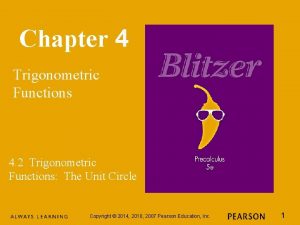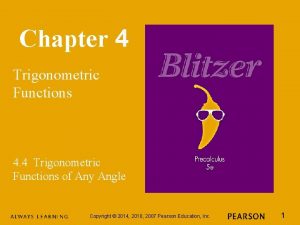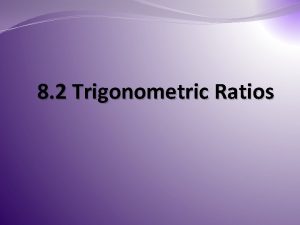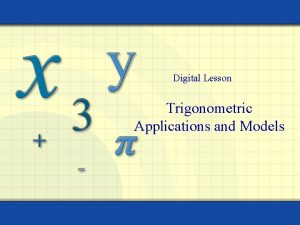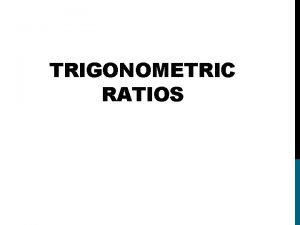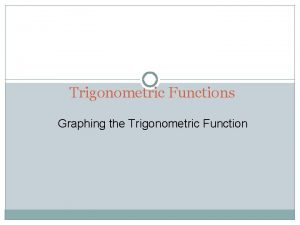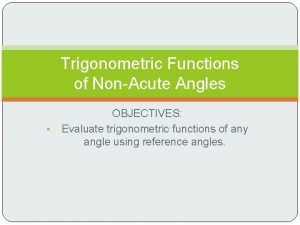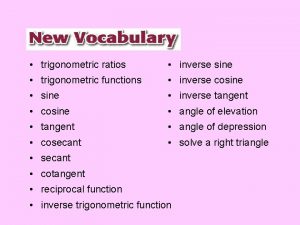Integration of Trigonometric Functions Integration Since integration is




















- Slides: 20

Integration of Trigonometric Functions

Integration Since integration is the reverse of differentiation, for the trig ratios we have

Integration Since indefinite integration is the reverse of differentiation, we get So, The rule is: 3 3 If we divide C by 3, we get Ø integrate the outer another functionconstant, say C 1, but we usually just write C.

Integration Since indefinite integration is the reverse of differentiation, we get So, The rule is: Ø integrate the outer function Ø divide by the derivative of the inner function

Integration Since indefinite integration is the reverse of differentiation, we get So, The rule is: Ø integrate the outer function Ø divide by the derivative of the inner function

Integration Since indefinite integration is the reverse of differentiation, we get So, the rule is: Ø integrate the outer function Ø divide by the derivative of the inner function Tip: We can check the answer by differentiating it. We should get the function we wanted to integrate.

Integration

Integration

Integration

Integration However, we can’t integrate all compound functions in this way. Let’s try the rule on another example: e. g. THIS IS WRONG ! Ø integrate the outer function Ø divide by the derivative of the inner function

Integration However, we can’t integrate all compound functions in this way. Let’s try the rule on another example: e. g. THIS IS WRONG ! The rule has given us a quotient, which, if we differentiate it, gives:

Integration What is the important difference between and ? So, the important difference is that the 1 st example has an inner function that is linear; it differentiates to a constant. The 2 nd is non-linear. We can’t integrate it.

Examples Integration Find 1. Solutions: 1. 2.

Integration We found earlier that so, You need to remember this exception to the general rule that we can only integrate directly if the inner function is linear. We also have, for example,

Integration e. g. Find We have a function of a function. . . but the inner function. . .

Integration e. g. Find We have a function of a function. . . but the inner function. . . is not linear. However, we can use a trig formula to convert the function into one that we can integrate.

Integration e. g. Find Which double angle formula can we use to change the function so that it can be integrated? ANS: Rearranging the formula: So,

Integration The previous example is an important application of a double angle formula. The next 2 are also important. Examples 1. Find 2. Find

Examples 1. Find Solution: So, Integration

Integration 2. Find Solution: So,
 Integration of inverse trigonometric functions
Integration of inverse trigonometric functions Exponential rule integral
Exponential rule integral Cofunctions in trigonometry
Cofunctions in trigonometry Three basic trigonometric functions
Three basic trigonometric functions Trig function transformations
Trig function transformations How to find period in sine function
How to find period in sine function 12-7 graphing trigonometric functions answers
12-7 graphing trigonometric functions answers 12-1 trigonometric functions in right triangles
12-1 trigonometric functions in right triangles Differentiate trigonometric
Differentiate trigonometric Graphing sine and cosine quiz
Graphing sine and cosine quiz Trigonometric functions domain and range
Trigonometric functions domain and range Limit trigonometric function
Limit trigonometric function Technology applications teks
Technology applications teks 4-5 practice graphing other trigonometric functions
4-5 practice graphing other trigonometric functions Parts of trigonometric functions
Parts of trigonometric functions Trigonometric functions domain and range
Trigonometric functions domain and range Derivative of inverse
Derivative of inverse Tan function period
Tan function period Trigonometric equations solver
Trigonometric equations solver Chapter 1 limits and their properties
Chapter 1 limits and their properties Algebra 2b unit 3 exam
Algebra 2b unit 3 exam
